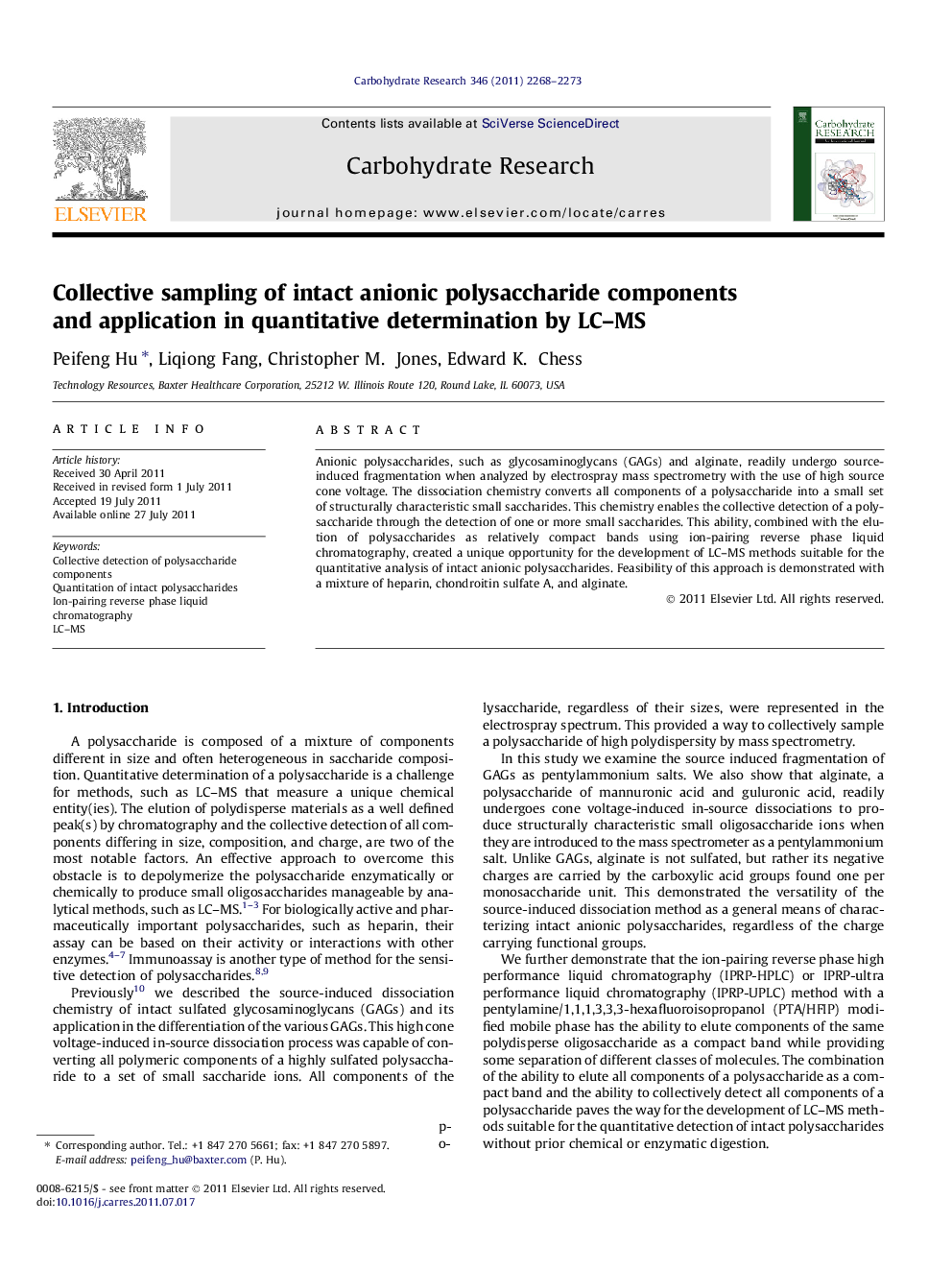| Article ID | Journal | Published Year | Pages | File Type |
|---|---|---|---|---|
| 1390476 | Carbohydrate Research | 2011 | 6 Pages |
Anionic polysaccharides, such as glycosaminoglycans (GAGs) and alginate, readily undergo source-induced fragmentation when analyzed by electrospray mass spectrometry with the use of high source cone voltage. The dissociation chemistry converts all components of a polysaccharide into a small set of structurally characteristic small saccharides. This chemistry enables the collective detection of a polysaccharide through the detection of one or more small saccharides. This ability, combined with the elution of polysaccharides as relatively compact bands using ion-pairing reverse phase liquid chromatography, created a unique opportunity for the development of LC–MS methods suitable for the quantitative analysis of intact anionic polysaccharides. Feasibility of this approach is demonstrated with a mixture of heparin, chondroitin sulfate A, and alginate.
Graphical abstractFigure optionsDownload full-size imageDownload as PowerPoint slideHighlights► Collective detection of all components of a polysaccharide by mass spectrometry. ► Separation and elution of polysaccharides as compact bands by ion-pairing reverse phase liquid chromatography. ► LC–MS quantitation of intact polysaccharides.
